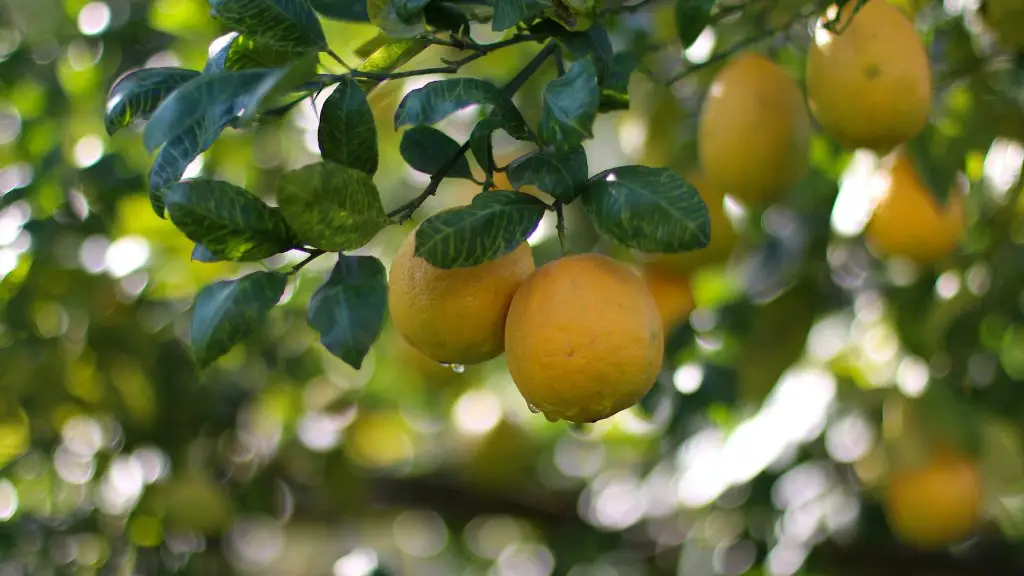Raising & Caring for Avocado Trees
Avocado trees can bring a diverse and interesting flavor to your home orchard. Despite needing a warmer climate of 12-15°C and plenty of sunlight, their ability to produce fruit makes them more than worth the effort. The trees are normally easy to cultivate and care for, with a few key points to get right.
The first step is to choose the right variety. There are literally hundreds of selections of avocados available, varying in size, shape and skin color. Broadly there are four types: Mexican, Guatemalan, West Indian and Hybrid. Mexican and Guatemalan varieties are usually hardier while West Indian and Hybrid varieties are more productive. Consider the local climate when choosing and opt for a variety that is best adapted.
It is best to start an avocado tree from a seed. Germinating your own tree is easy and can be done by simply inserting three or four toothpicks around the seed’s circumference about two thirds of the way up. The seed should then be immersed in a glass of water so that only the bottom end is submerged and the top end is exposed to the air. Within a couple of weeks, the seed should start to grow and get ready for planting.
Select a bright and sunny place to plant the tree, with plenty of space for it to grow. Choose a spot that gets ample sunshine and is sheltered from strong winds. Sapodilla, guava and mango trees are ideal to provide much needed shade. Prepare the soil by removing any existing turf or weeds and then mix in some organic compost to get it fertilized.
Dig a hole as big as the tree root and around twice as deep, then backfill the soil into the hole. When the tree is placed in, ensure that the root ball is not covered in soil. Avocado trees should be planted deep and must be watered thoroughly after planting.
The tree should be regularly watered, around twice per week when humidity is low or in dry weather or once per week when the weather is humid. To avoid overwatering, consider using drip irrigation as this will limit water wastage. Apart from watering, the tree may need pruning to control the shape and size and also thinning to prevent overloading on fruits.
Nutrients are also essential, and the avocado tree will need to be fertilized every six to eight weeks during the growing season, between April and October. Compost can be added each month to enrich the soil and keep the tree healthy and productive.
Testing Soil & Treating Nutrients
When starting out with avocado trees, testing the soil is the first and most important step. Choose a testing kit from the local garden store, or better yet, contact a certified soil lab to get the exact results. This will give you the basic information about the nutrient content in your soil and the amount of fertilizer (if any) required.
The fertilizer used to feed an avocado tree should have a high nitrogen content, typically in the 5-6-3 ratio, to ensure the tree has the healthy, dark-green leaves. The fertilizer can be applied either in liquid form or as a granular fertilizer. For liquid fertilizer, mix the recommended dosage in water and feed the tree every two to three weeks throughout the growing season. For a granular fertilizer, sprinkle and then work it into the soil around the tree.
Mulching is an important factor when raising an avocado tree. A 3-4 inch layer of mulch around the base of the tree helps to preserve the soil temperature, conserve water and prevent weed growth. Newspaper and cardboard are good options as they are biodegradable and add nutritive antibodies. Make sure to use only organic matter for mulching.
Avocado trees are generally pest and disease resistant. But when problems do arise, it is better to treat the tree with organic products. Always check the label for instructions and protective measures to be taken. One of the most common pests that attack these trees is weevils. They bore into the tree, leaving small round holes and defoliates the canopy. To prevent infestation, ensure the tree is free of weeds and debris and practice good hygiene.
Controlling & Pollinating Avocados
Avocado trees self-pollinate, but to ensure better fruit production and quality, opt for a type A and type B variety. It is important to understand that type A and type B trees need to be planted together and should not be more than 186 feet away. Type A trees blossom in the early morning while the type B flowers in the afternoon. The pollen will be transported from one tree to the fruit on another, ensuring that the fruits are well pollinated.
Another way to ensure good quality produce is to thin out the fruit. As the fruits continue to mature, they can be left on the tree for at least five months, but do not let them go beyond that. Fruits that fall off on their own should be discarded as they can attract pests, diseases and insects. Pruning and trimming the leaves is important to ensure a good branch structure. Remove gone-off leaves and dead branches to maintain the tree’s health.
Another trick to get large and healthy fruits is to bunch the fruits together. Each fruit has something called an ‘eyeball’ in the middle. To encourage fruit bunching, simply pick up a few fruits and tie them together with string or yarn. This will help the fruits to bunch together and increase the overall size.
Avocado trees often require staking to hold the trunk in place. As the tree grows, use wooden stakes to support the main trunk. The trunk should be wrapped with a rope or fabric strip to avoid damage from the wind pressure. The stake should be around 5-6 feet in length and need to be changed every three years.
Preventing Diseases & Pests on Avocado Trees
Pests and diseases can make caring for an avocado tree difficult. The most common diseases affecting avocado are Anthracnose and Phytophthora root rot. These can be prevented by trimming, proper drainage and regularly checking the tree for signs of disease. Spraying a copper-based fungicide, an insecticide or a neem-based oil to the tree can help reduce the risk of infection.
The most common pest on avocado trees is the whitefly. They feed on the tree’s leaves and suck the sap out of them, leading to defoliated branches and discolored leaves. To control whiteflies, wash the plants down with a strong blast of water to remove the eggs and larvae. Then spray with insecticidal soap or neem oil to reduce the population.
Scale insects are another problem for avocado trees. They are tricky to manage, as the insects themselves cannot be seen because the outer shell is firmly attached to the leaves and branches. As a preventative measure, regularly spray trees with neem oil or an insecticidal soap. If an infestation has already started, you will need to use a systemic insecticide.
Harvesting & Storing Avocado Fruits
Avocado fruits take between four and fifteen months to grow, depending on the variety and the climate. However, it is best to wait until the fruits become mature as this will give you better quality and taste. To gauge when an avocado is ripe, lightly press the skin; it should be slightly yielding to the touch.
Once ripe, the fruits can be picked and stored at room temperature, away from direct sunlight. Storing the fruits in a paper bag is preferred as this helps absorb the moisture and prevent shrivelling. Be sure to check the bag every day and pick out any fruits which have turned soft or have ripened too quickly.
Avocado fruits can also be stored in the refrigerator and will last longer if kept there, even when ripe. To further preserve the harvest, mash the avocados and freeze them in airtight zip-lock bags. This will help keep them fresh for up to one year.
Conclusion
Growing an avocado tree may take quite a bit of care and patience, but with the right environment and maintenance, your tree will reward you with plenty of delicious, organic fruits. From choosing the right variety and planting them in the perfect soil to controlling pests and properly harvesting and storing the fruits, this guide has covered it all.



